9 Planable alternatives to help scale your business in 2025

Table of Contents
Social media teams hit a predictable wall: what starts as a tool to help manage social media content becomes a bottleneck when you need a more comprehensive tool. You’re managing content efficiently, but you’re missing the analytics to prove ROI, the unified inbox to handle customer conversations at scale and the listening capabilities to understand what people are saying about your brand.
This guide breaks down nine Planable alternatives that scale with growing teams—from platforms that unify publishing and customer care to specialized tools for analytics, content discovery and campaign tracking. We’ll show you exactly what each platform does best and how to choose the right solution for your team’s specific needs and growth trajectory.
1. Sprout Social
Sprout Social is a social media management platform that unifies publishing, analytics and customer care in one place. This means you’re not jumping between tools to schedule posts, respond to messages and measure performance—everything lives in a single workflow.
Sprouts Smart Inbox consolidates every message from every social profile you manage. You can filter by keywords, assign conversations to specific team members and track response times across your entire organization. When a customer asks a question on Instagram, tags you on X, or comments on Facebook, you see it all in one stream.
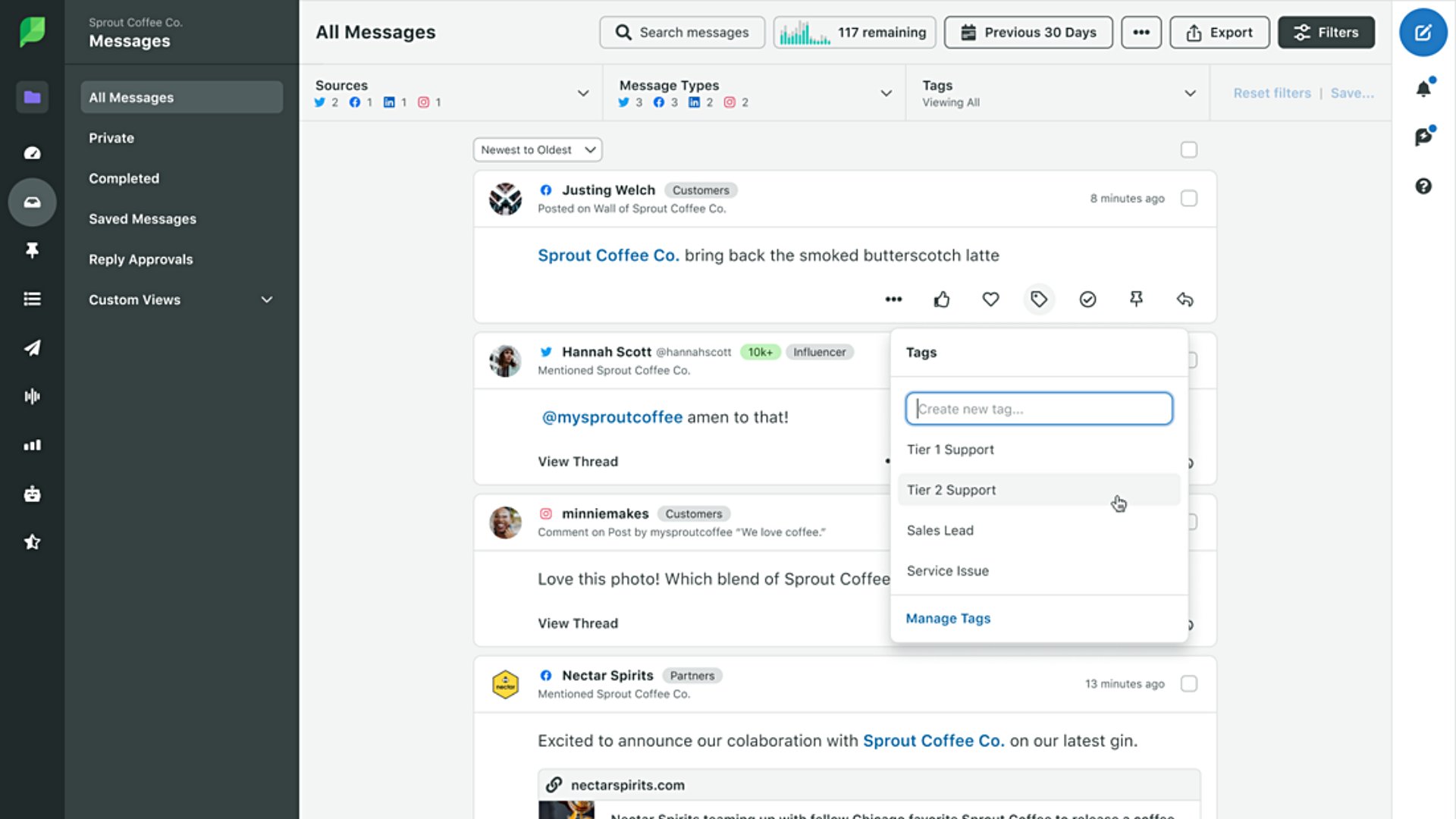
The platform’s Reports go beyond basic metrics. You track performance by individual post, by platform, by campaign tags you create and by time period. This tag-based analysis lets you compare how product launches perform against thought leadership content or measure the ROI of specific initiatives.
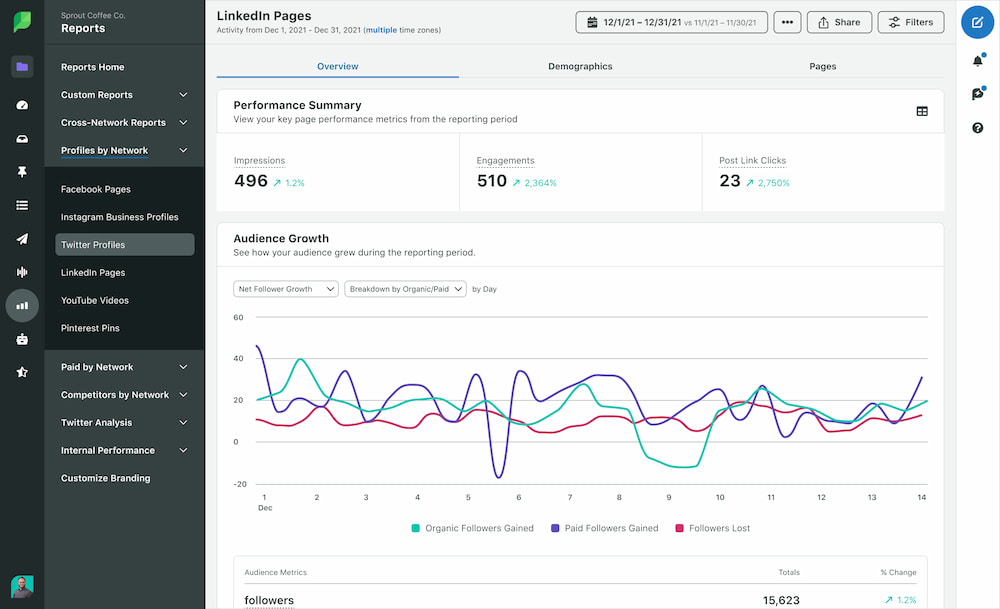
Publishing happens through Sprout Queue, which organizes your content calendar, and ViralPost® technology, which analyzes when your specific audience engages most and automatically schedules posts for those optimal times. The Asset Library stores your approved brand visuals and templated responses so everyone on your team uses consistent messaging.
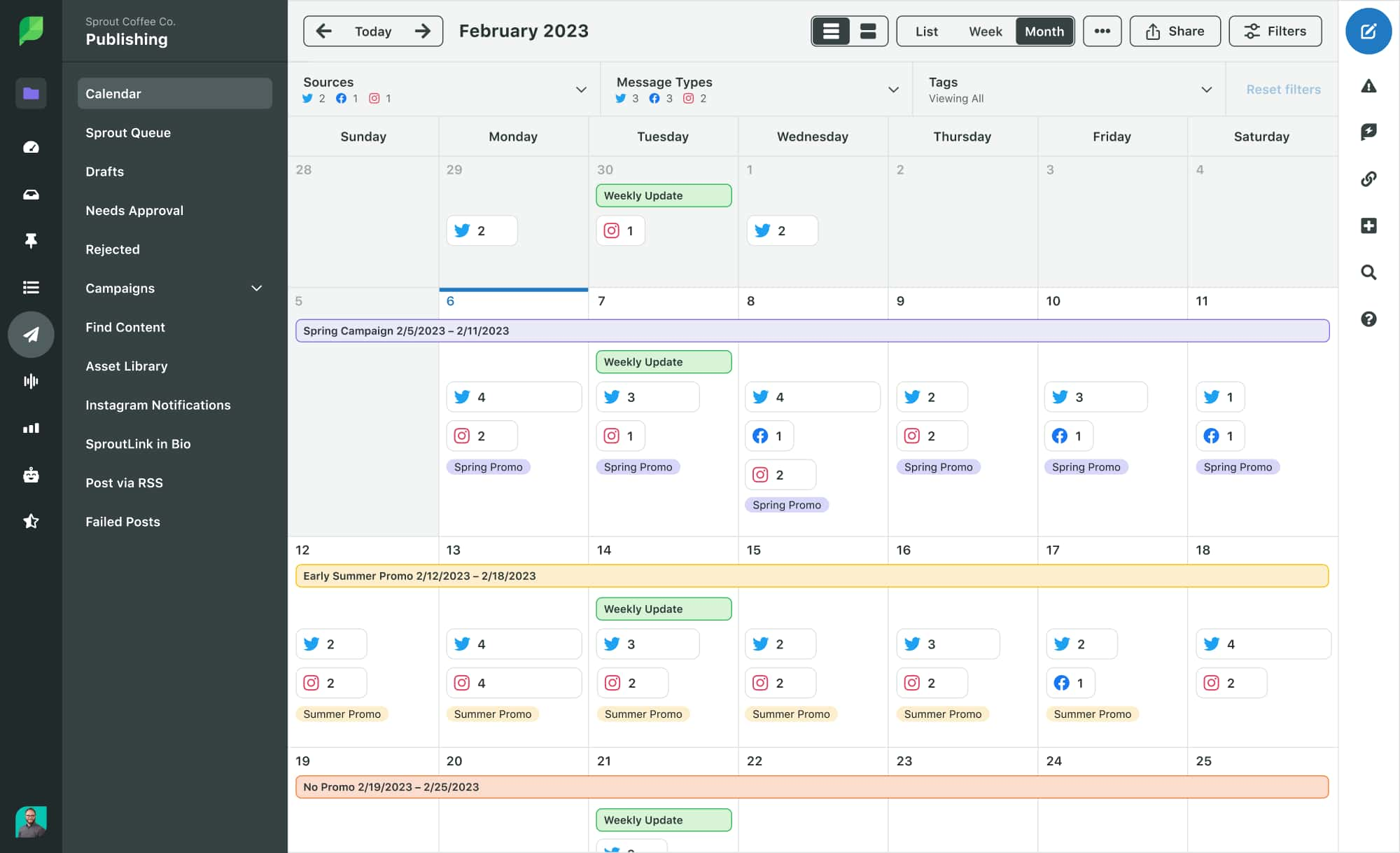
When you’re ready to grow, Sprout offers add-ons that centralize all the ways social can intersect with your business priorities, including:
- Premium Analytics: Choose metrics that best fit your business goals, show the impact of this data in presentation-ready reports and quickly distribute these insights to your key stakeholders with dynamic shareable links.
- Employee Advocacy: Empower your employees to become brand advocates and amplify your reach through organic sharing. This expands your social presence and builds trust with wider audiences.
- Influencer Marketing: Discover and manage relationships with key influencers to tap into new customer segments and drive authentic engagement with your brand.
- Social Listening: Track conversations and trends relevant to your brand, industry and competitors. These insights help you identify opportunities, manage your reputation and make data-driven decisions.
- Customer Care by Sprout Social: Our Case Management solution isn’t just about responding; it’s about anticipating needs. Equip your team to deliver faster support and build lasting loyalty. Sprout Social also offers integration with Salesforce, Zendesk, HubSpot, Tableau and Microsoft Dynamics 365 to ensure a unified customer view.
2. Statusbrew
Statusbrew is a social media management platform built for enterprise organizations that need strict control over who can do what. This means it excels at managing complex approval chains across multiple brands, regions and departments.
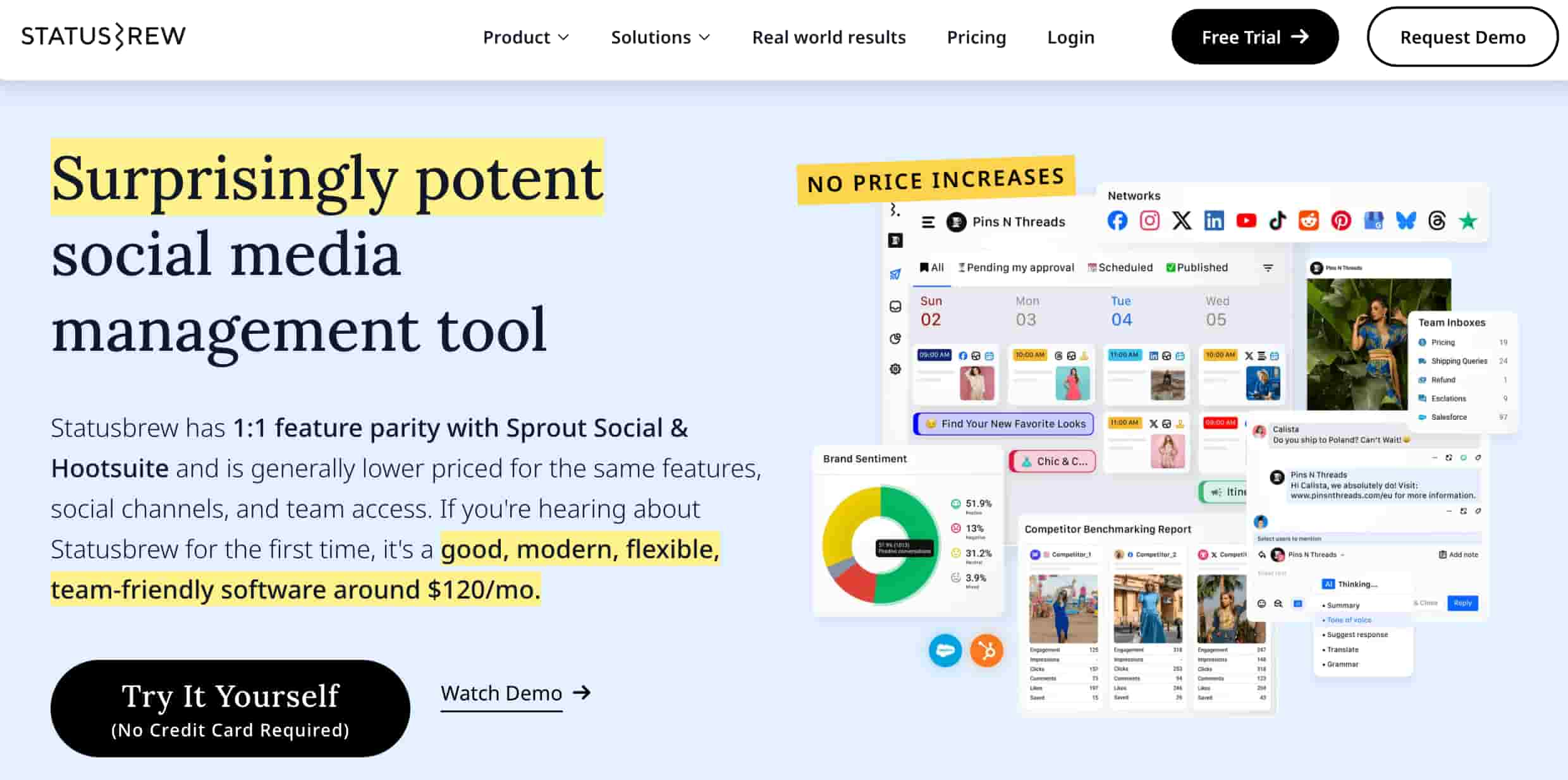
The platform’s approval workflows let you create multi-level review processes with role-based permissions. A junior social media coordinator can draft posts, a manager reviews them, legal approves the messaging and a director gives final sign-off—all tracked within the system. The unified inbox consolidates messages but adds automated routing rules that send customer service inquiries to your support team and sales questions to your business development reps.
Compliance tools provide content governance and complete audit trails. You can see who created what, when it was approved, who made changes and when it published. This documentation is essential for regulated industries like healthcare, finance and government.
Team analytics track individual performance, response times and workload distribution. Leaders use this data to identify bottlenecks, balance work across team members and optimize resources.
3. ContentStudio
ContentStudio is a content curation and publishing platform that solves the “what should we post?” problem. This means it helps you find relevant content to share when your own content pipeline runs dry.
The content discovery engine integrates RSS feeds from industry publications and monitors specific topics across the web. You set up searches for keywords relevant to your audience, and the platform surfaces trending articles, videos and images you can share. This keeps your social feeds active without demanding constant original content creation.
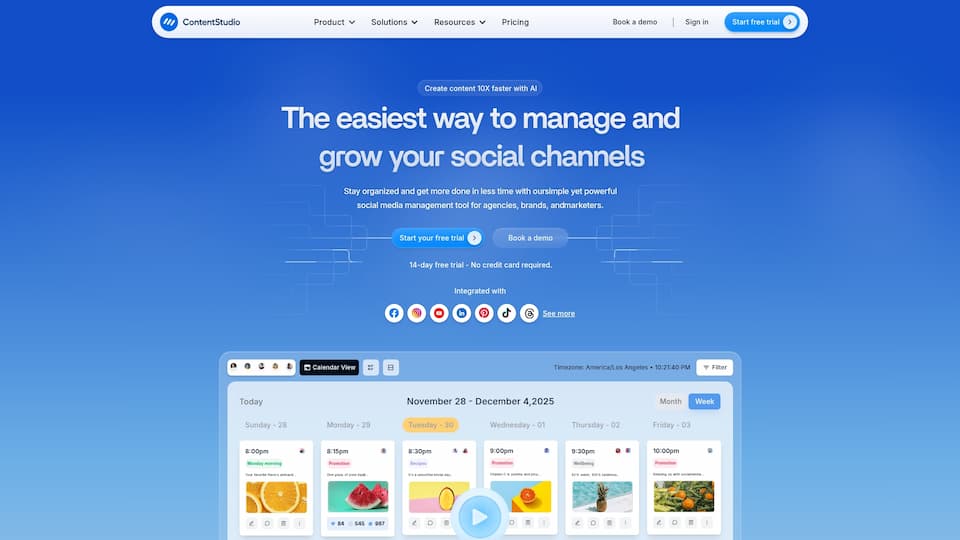
Automation recipes let you create rule-based posting schedules. You can automatically reshare evergreen content on a rotating basis, post curated articles at specific times and recycle your top-performing posts to maximize their value.
Bulk scheduling accepts CSV uploads for campaign management. When you’re launching a product with dozens of posts across multiple platforms, you upload a spreadsheet and schedule everything at once instead of manually creating each post.
4. SocialBee
SocialBee is a social media scheduling tool that organizes your content into categories. This means you maintain a balanced content mix without manually tracking what you’ve posted.

You can create categories like “Product Updates,” “Industry News,” “Customer Stories” and “Educational Content.” Then you assign each post to a category and set posting schedules for each one. SocialBee automatically pulls from these categories to fill your calendar, ensuring you’re not posting three product promotions in a row or going weeks without sharing customer success stories.
Evergreen recycling automatically reshares your best-performing content. You mark posts as evergreen, and the platform adds them back to your queue after a set time period. This maximizes the value of content that took significant effort to create.
Category-specific timing optimization lets you schedule promotional content during business hours and educational content during evening browsing times. URL shortening is built in, so you track clicks and measure which content drives traffic to your website.
5. Oktopost
Oktopost is a Planable alternative built specifically for B2B marketers who need to connect social media efforts to revenue. The platform provides funnel-focused analytics to attribute social engagement to pipeline and sales, making it a strong choice for teams focused on ROI.
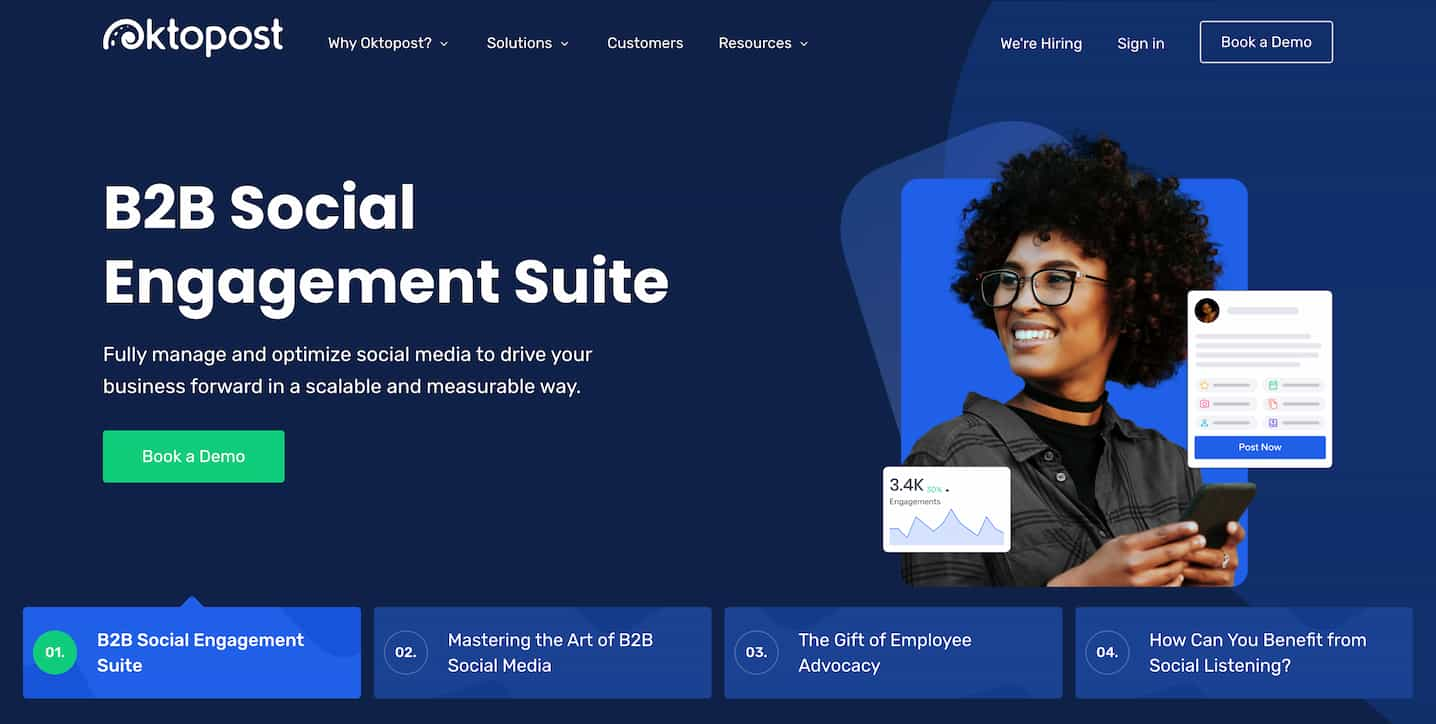
With a LinkedIn-first approach, Oktopost offers an employee advocacy hub and deep integrations with CRM and marketing automation platforms like Salesforce. This specialization in B2B makes it a powerful tool for enterprise teams needing to manage advocacy at scale and prove the business impact of their social strategy.
6. Later
Later is a Planable alternative that specializes in scheduling content for visual-first platforms like Instagram and TikTok. It offers a drag-and-drop social media calendar for organizing and previewing posts, along with a media library for storing and managing assets.
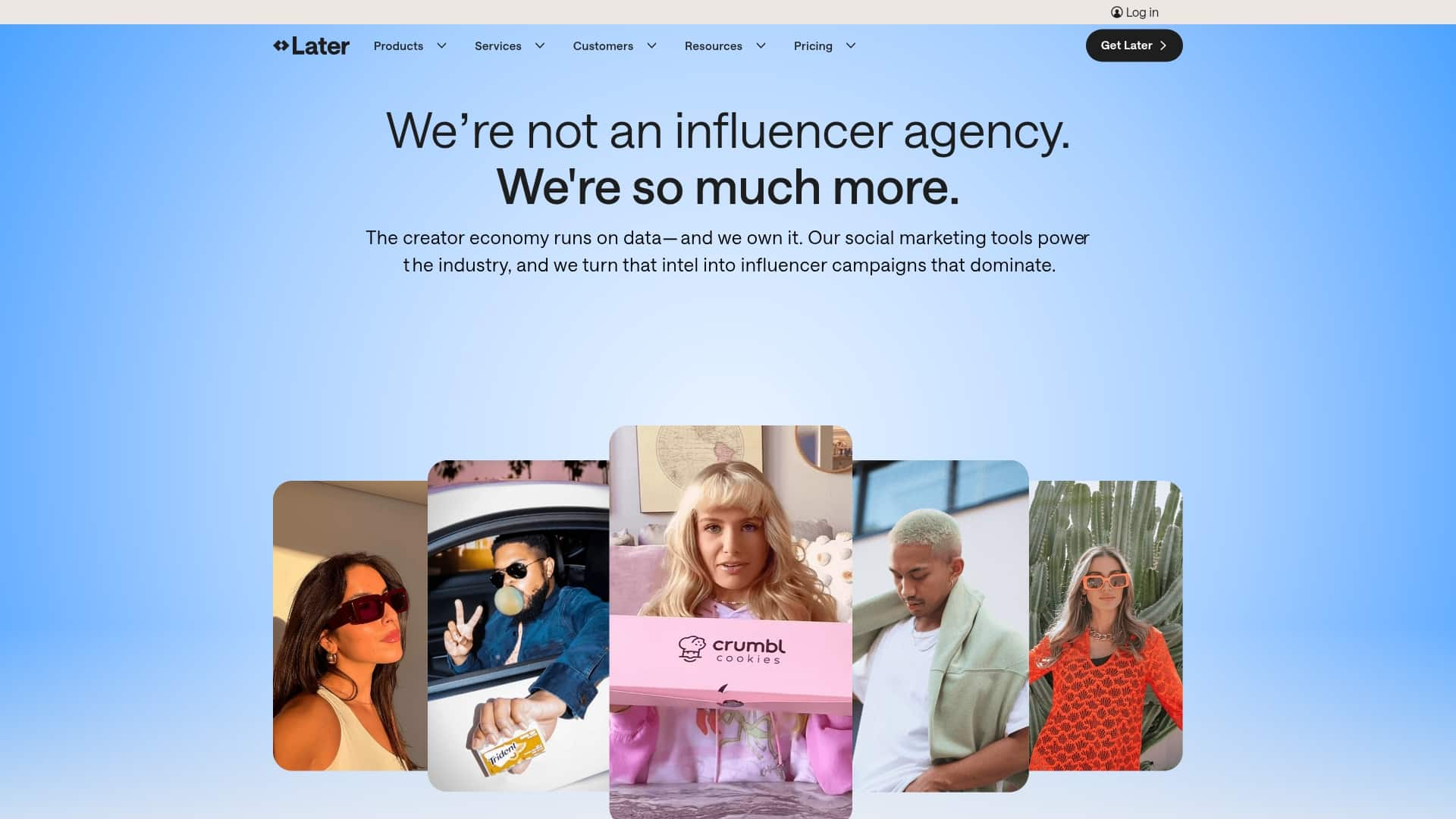
Beyond its visual focus, Later also provides features like hashtag suggestions and link-in-bio tools to help users optimize their content and drive traffic. Analytics are also available to track key metrics and refine social media strategies. While Later supports other platforms like Facebook and X, its core strength remains in its visual content management capabilities.
7. Sprinklr
Positioned primarily for large enterprises, Sprinklr offers a unified customer experience management (CXM) platform where social media management is a core component. It has broad channel coverage, including social media, messaging, chat, email and voice, aiming to provide a complete view of the customer. It also offers enterprise-grade governance, scalability, advanced AI capabilities for listening and insights and customer care features.

Sprinklr provides listening capabilities, detailed analytics and tools for managing large, complex social operations across global teams. Its complexity means it’s typically better suited for large organizations needing an all-encompassing CXM solution, rather than just a social media tool.
8. Buffer
Buffer offers social media scheduling and publishing. Its interface makes it easier for individuals and small teams to plan and queue content across various social networks. Buffer provides basic analytics to track post performance and engagement metrics, along with tools for creating landing pages and a start page (link in bio).
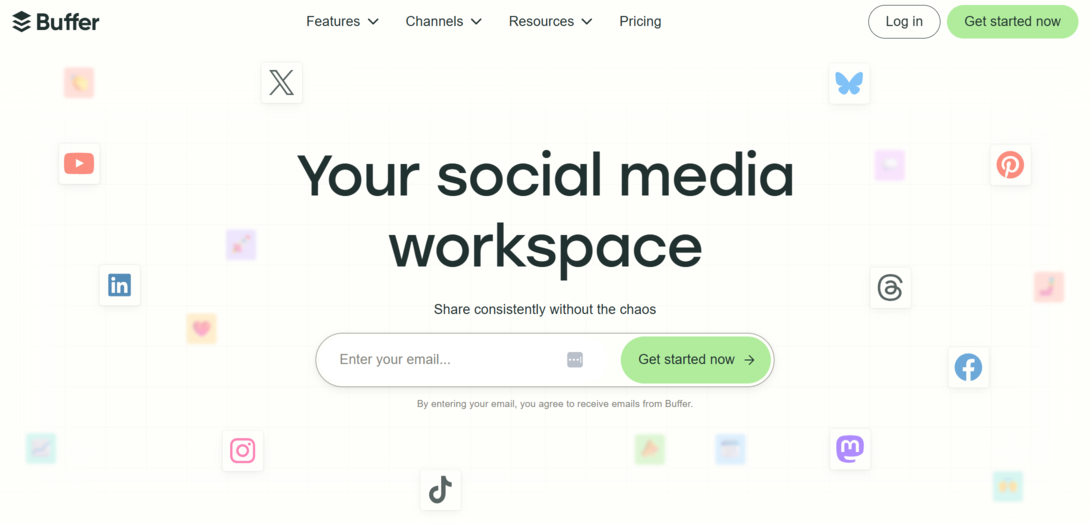
Buffer focuses less so on social listening, advanced analytics or integrated customer care compared to other platforms. For teams primarily needing an efficient and user-friendly tool for planning and publishing content across multiple channels, Buffer presents a streamlined option.
9. Keyhole
Keyhole is a social media analytics tool focused on real-time campaign measurement and hashtag performance. This means it’s built for tracking specific marketing initiatives rather than day-to-day social management.
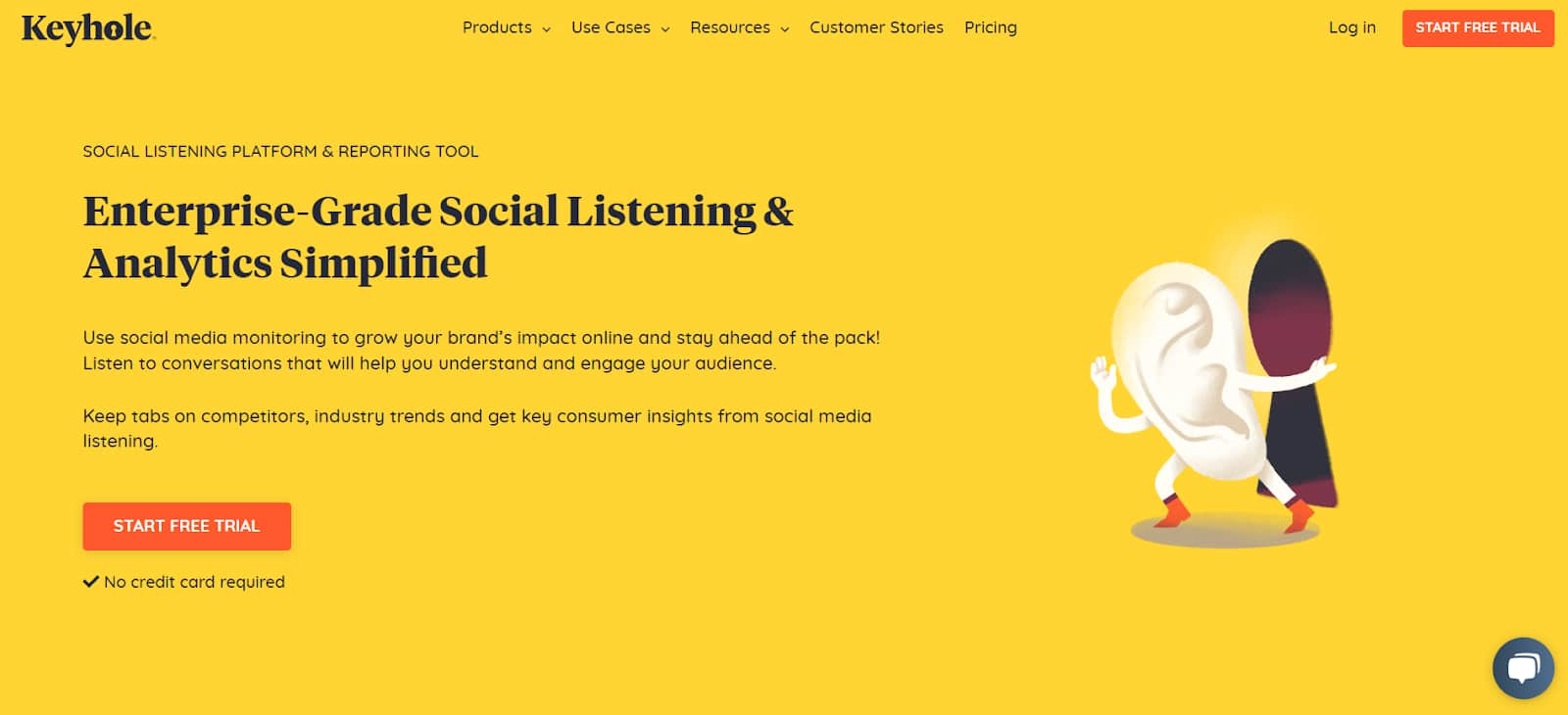
Hashtag and keyword tracking monitors any term across X (formerly known as Twitter) and Instagram in real time. When you launch a campaign with a branded hashtag, you see every mention, measure total reach and track engagement as it happens.
Campaign monitoring measures the complete impact of marketing initiatives. You track reach, impressions, engagement and sentiment to prove ROI to stakeholders. Influencer analytics identify key voices in your industry and measure their impact on brand conversations. You discover who’s driving discussions, how much reach they command and whether their audience aligns with your target market.
Choosing the right Planable alternative
Your next platform should match your team’s ambitions, not just your current needs. Planable handles content approvals well, but scaling teams need comprehensive capabilities—unified customer care through features like the Smart Inbox, strategic insights from AI-powered Listening and analytics that prove business impact.
The right choice depends on whether you’re solving for deeper data, better customer engagement or true enterprise scalability. Start a free trial or request a demo of Sprout Social to see if it’s the right Planable alternative for you.


Share